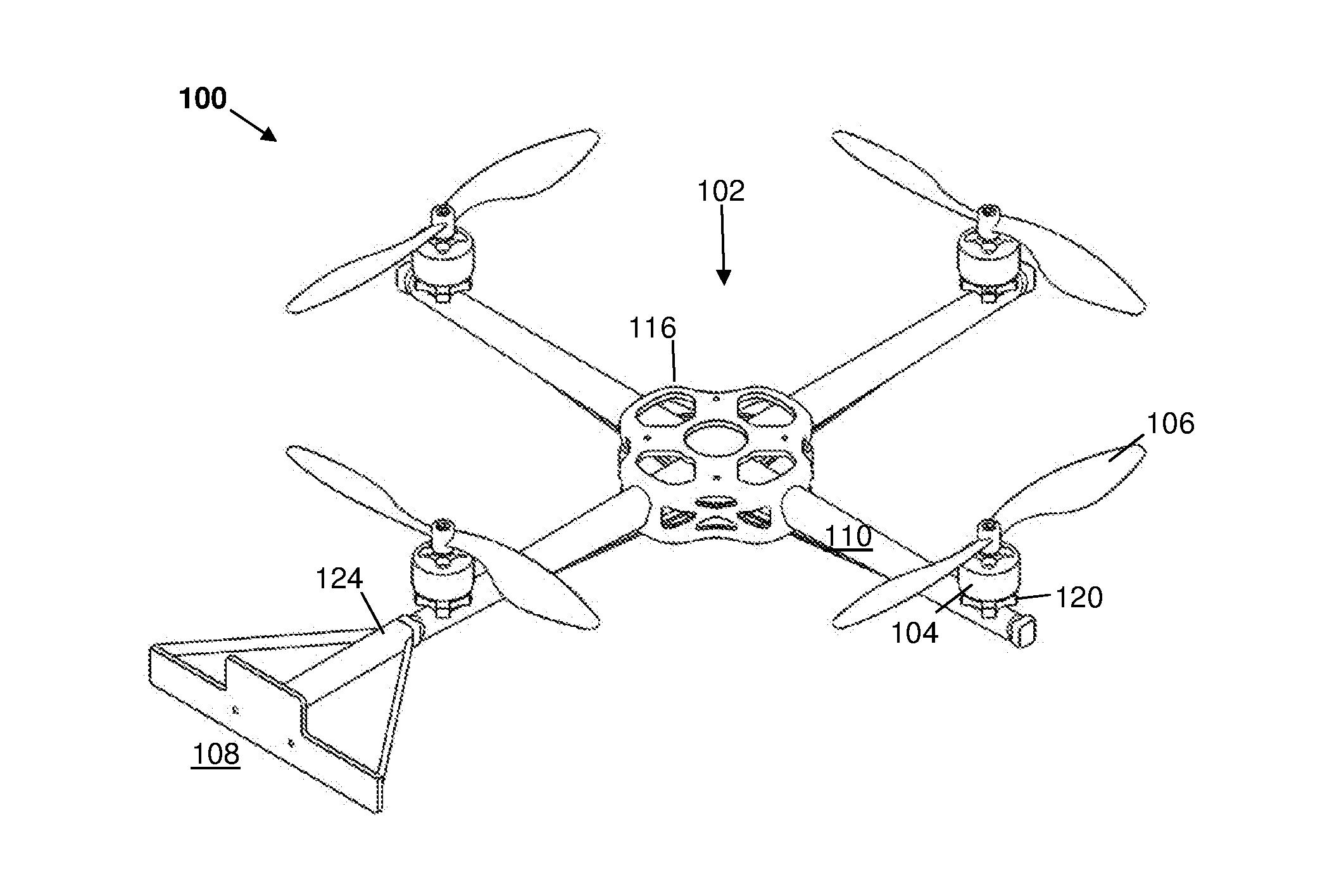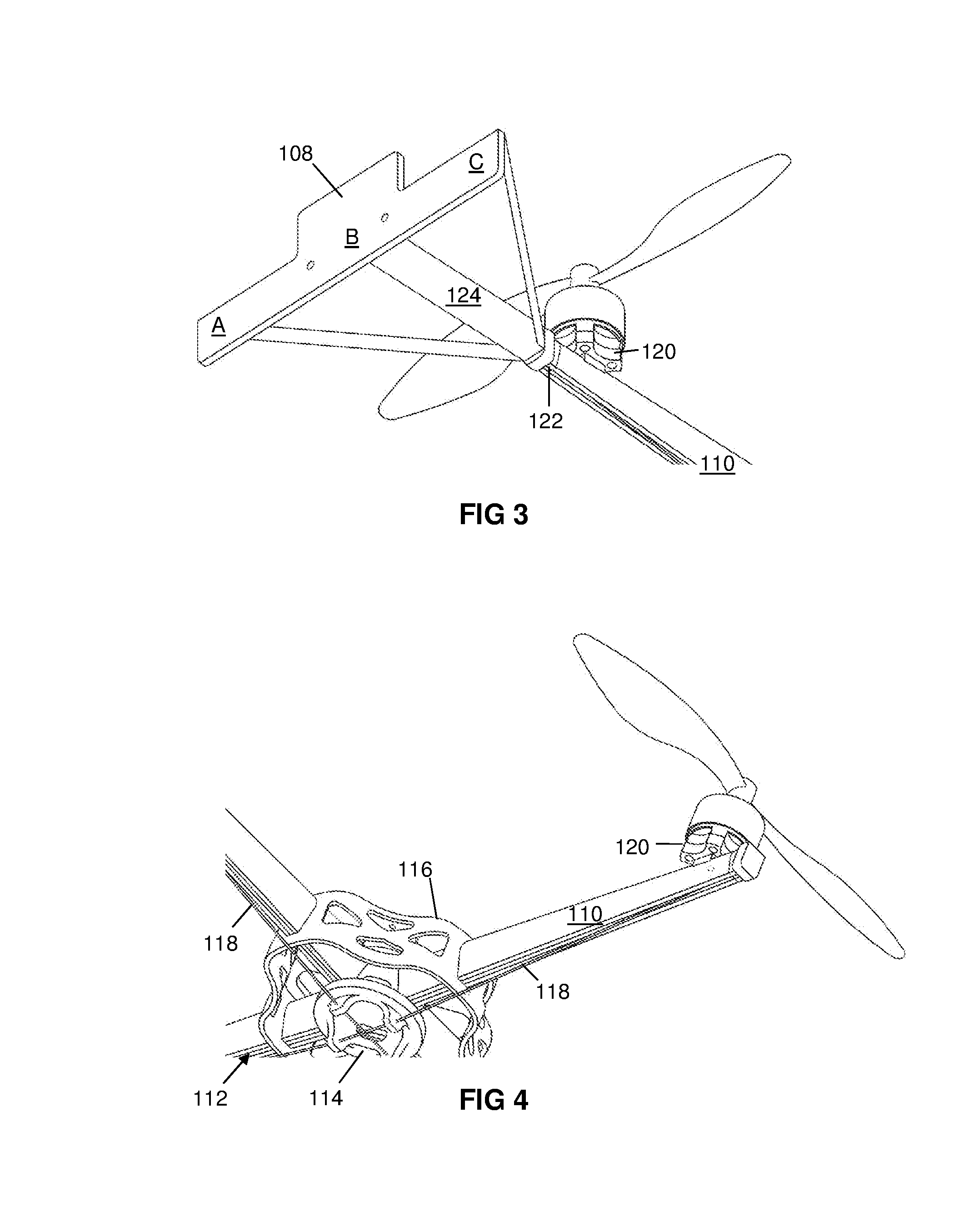Airborne scanning system and method
a scanning system and airborne technology, applied in the field of airborne scanning system and method, can solve the problems of short battery life, short range, and inability to meet the needs of daily use, and achieve the effects of less labor, quick resumption of normal business activities, and less stock taking
- Summary
- Abstract
- Description
- Claims
- Application Information
AI Technical Summary
Benefits of technology
Problems solved by technology
Method used
Image
Examples
Embodiment Construction
[0088]An example of a scanning system according to the invention includes the following basic features: a UAV having a mounted barcode and RFID scanner; a base station; pilot equipment; and a power source.
[0089]The above basic features are discussed in further detail below:
[0090]A: UAV
[0091]The UAV is an unmanned aerial vehicle, typically consisting of a battery, flight control computers, motors, propellers or rotors, an airframe, and radio equipment. The UAV should preferably be capable of sustaining stabilized, hovering flight in a confined environment.
[0092]Advances in model aircraft technology have made possible electric powered computer controlled flying vehicles capable of carrying a payload of up to 1 kg.
[0093]A preferred type of UAV for the present invention is a multi rotor. This is a battery operated flying craft which is approximately 0.5 m in diameter and has a number of equal-sized rotors mounted on generally vertical axes. It also has a flight control computer to stabi...
PUM
 Login to View More
Login to View More Abstract
Description
Claims
Application Information
 Login to View More
Login to View More - Generate Ideas
- Intellectual Property
- Life Sciences
- Materials
- Tech Scout
- Unparalleled Data Quality
- Higher Quality Content
- 60% Fewer Hallucinations
Browse by: Latest US Patents, China's latest patents, Technical Efficacy Thesaurus, Application Domain, Technology Topic, Popular Technical Reports.
© 2025 PatSnap. All rights reserved.Legal|Privacy policy|Modern Slavery Act Transparency Statement|Sitemap|About US| Contact US: help@patsnap.com



